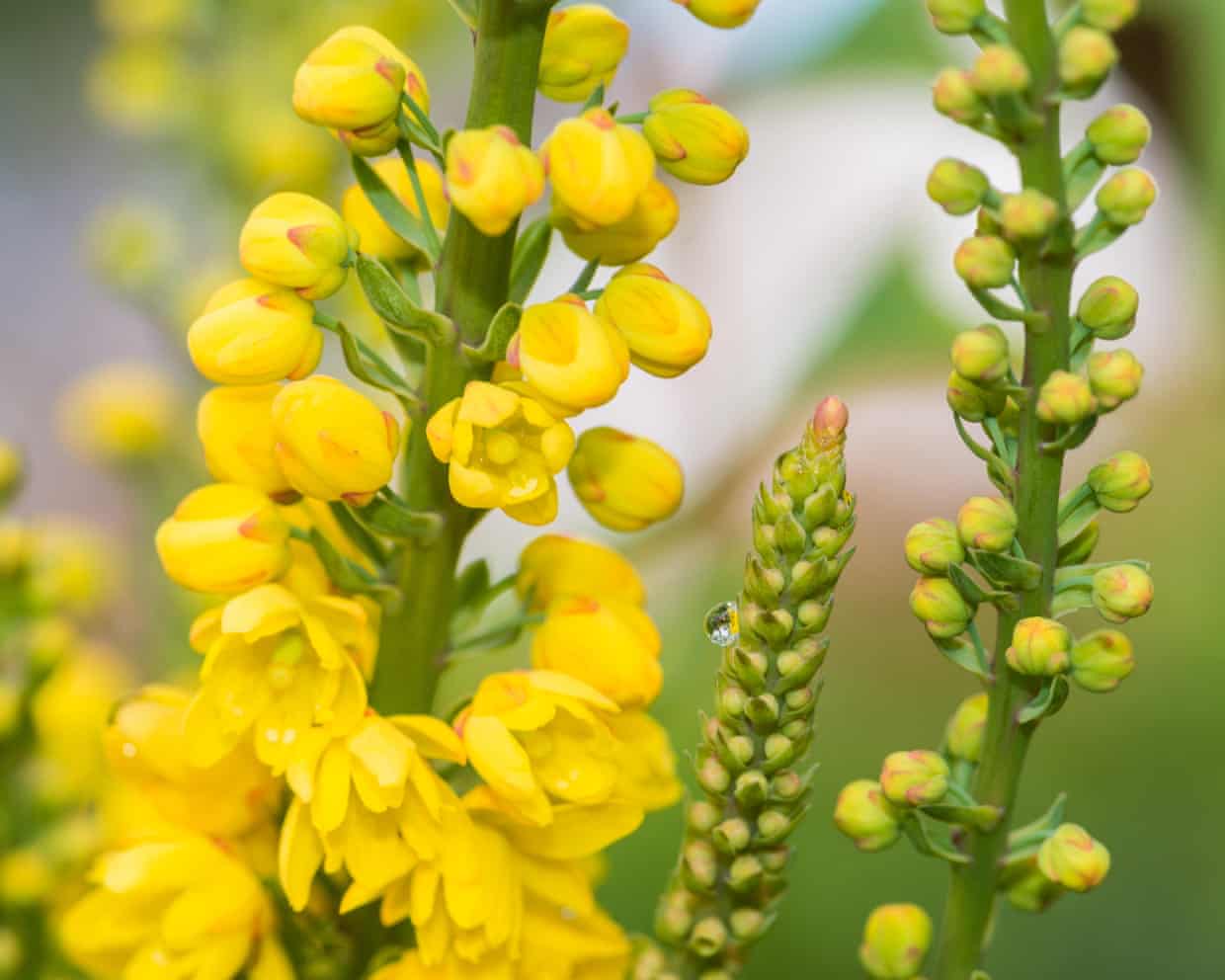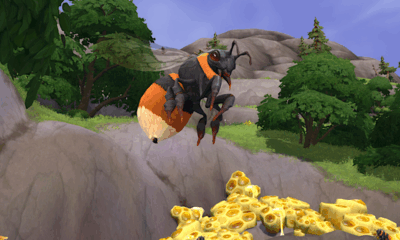Science
Flowers Unleash Unique Mechanisms to Attract Pollinators

Recent research highlights the fascinating adaptations of flowers to attract pollinators while simultaneously managing their resources. Many flower species, particularly those from the genera Berberis and Mahonia, exhibit remarkable touch-sensitive movements in their male reproductive parts, known as stamens. These movements are designed to optimize pollination and ensure the efficient use of nectar and pollen.
When an insect lands on the flowers of Berberis or Mahonia to feed on nectar, it is often met with an unexpected reaction. The stamens bend over swiftly, releasing a cloud of pollen that often covers the insect’s face or tongue. This startling experience prompts the insect to make only a brief visit, allowing the flower to conserve its nectar and pollen for future visitors. As the insect moves on, it inadvertently transfers the pollen to other flowers, promoting cross-pollination.
The process becomes even more dramatic in the case of the Catasetum orchid. When an insect approaches these flowers, it faces a forceful ejection of sticky pollen bags. These bags are propelled out at remarkable speed, often knocking the insect away and ensuring that the pollen adheres to its body. This mechanism effectively increases the chances of the pollen reaching another flower.
In Australia, the Stylidium genus, commonly known as triggerplants, showcases a unique approach to pollination. These flowers possess a club-shaped organ that swings through 180 degrees when touched, striking the visiting insect with pollen. This rapid movement occurs in a fraction of a second, specifically within approximately 10 milliseconds. Once the pollen is transferred, the triggerplant resets almost immediately, ready to engage the next pollinator.
These innovative adaptations allow flowers not only to safeguard their reproductive resources but also to enhance their chances of successful pollination. The diverse strategies employed by various plant species reveal the intricate relationships between flora and pollinators, underscoring the importance of these interactions in ecosystems around the world.
Understanding these mechanisms can have significant implications for conservation efforts. As many pollinator species face threats from habitat loss and climate change, preserving the plants that rely on them is critical. Research conducted by institutions such as the University of Queensland continues to shed light on these complex interactions, paving the way for better strategies to support both plant and pollinator populations.
The intricate dance between flowers and their pollinators is a testament to the remarkable adaptations that have evolved over millions of years, ensuring the survival of both parties in a constantly changing environment.
-

 Science1 week ago
Science1 week agoMicrosoft Confirms U.S. Law Overrules Canadian Data Sovereignty
-

 Technology1 week ago
Technology1 week agoGoogle Pixel 10 Pro Fold Specs Unveiled Ahead of Launch
-

 Technology1 week ago
Technology1 week agoWorld of Warcraft Players Buzz Over 19-Quest Bee Challenge
-

 Science5 days ago
Science5 days agoChina’s Wukong Spacesuit Sets New Standard for AI in Space
-

 Health6 days ago
Health6 days agoRideau LRT Station Closed Following Fatal Cardiac Incident
-

 Science1 week ago
Science1 week agoXi Labs Innovates with New AI Operating System Set for 2025 Launch
-

 Lifestyle6 days ago
Lifestyle6 days agoVancouver’s Mini Mini Market Showcases Young Creatives
-

 Science1 week ago
Science1 week agoInfrastructure Overhaul Drives AI Integration at JPMorgan Chase
-

 Technology1 week ago
Technology1 week agoHumanoid Robots Compete in Hilarious Debut Games in Beijing
-

 Top Stories1 week ago
Top Stories1 week agoSurrey Ends Horse Racing at Fraser Downs for Major Redevelopment
-

 Technology1 week ago
Technology1 week agoNew IDR01 Smart Ring Offers Advanced Sports Tracking for $169
-

 Business6 days ago
Business6 days agoCanadian Stock Index Rises Slightly Amid Mixed U.S. Markets
-

 Health6 days ago
Health6 days agoB.C. Review Urges Changes in Rare-Disease Drug Funding System
-

 Technology5 days ago
Technology5 days agoDragon Ball: Sparking! Zero Launching on Switch and Switch 2 This November
-

 Science1 week ago
Science1 week agoNew Precision Approach to Treating Depression Tailors Care to Patients
-

 Technology1 week ago
Technology1 week agoGlobal Launch of Ragnarok M: Classic Set for September 3, 2025
-

 Technology1 week ago
Technology1 week agoFuture Entertainment Launches DDoD with Gameplay Trailer Showcase
-

 Education5 days ago
Education5 days agoParents Demand a Voice in Winnipeg’s Curriculum Changes
-

 Technology1 week ago
Technology1 week agoInnovative 140W GaN Travel Adapter Combines Power and Convenience
-

 Business1 week ago
Business1 week agoNew Estimates Reveal ChatGPT-5 Energy Use Could Soar
-

 Health5 days ago
Health5 days agoRideau LRT Station Closed Following Fatal Cardiac Arrest Incident
-

 Business5 days ago
Business5 days agoAir Canada and Flight Attendants Resume Negotiations Amid Ongoing Strike
-

 Health1 week ago
Health1 week agoGiant Boba and Unique Treats Take Center Stage at Ottawa’s Newest Bubble Tea Shop
-

 Business1 week ago
Business1 week agoSimons Plans Toronto Expansion as Retail Sector Shows Resilience










